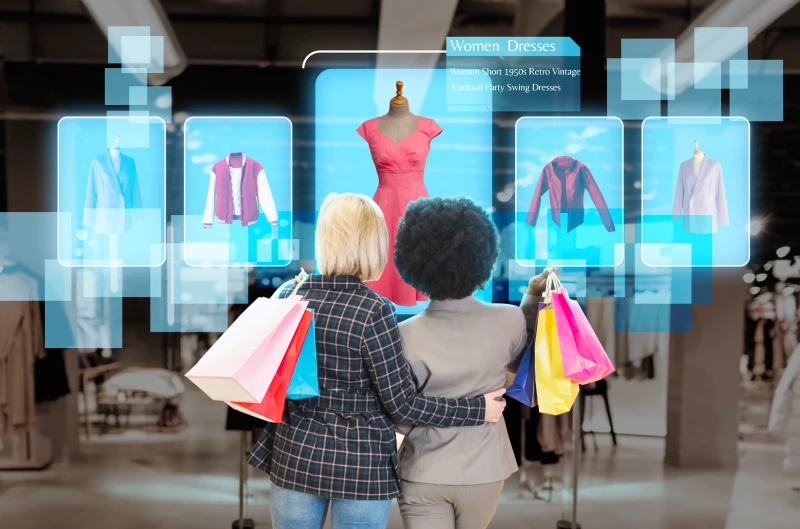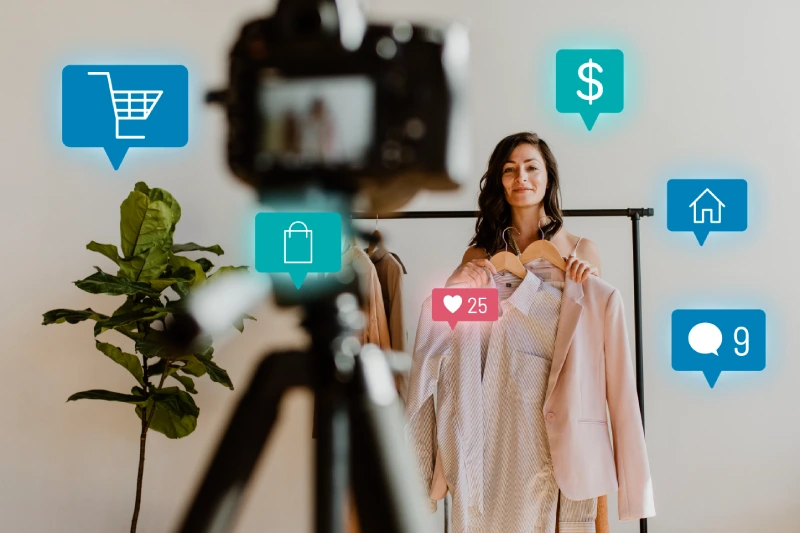
The Impact of Instagram on Fashion: From Runway to Street Style

Instagram has become a disruptive force in the fashion business, changing everything from the elite Paris runways to the busy streets of big metropolises. Instagram is a visual-driven platform that has revolutionized how fashion is consumed, shown off, and understood globally. In addition to democratizing access to fashion, the internet sphere has sparked a cultural revolution in which influencers are paramount, trends emerge, and the lines separating haute couture from street style merge into a fluid tapestry of originality.
In this article, we delve into the complex effects of Instagram on fashion, following its influence from the highest echelons of haute couture runways to the most basic levels of street style. From the industry’s democratization to the rise of influencer marketing, Instagram has fundamentally altered the way fashion is created, consumed, and experienced. By examining these changes, we can better understand Instagram’s profound role in shaping contemporary fashion culture, bridging the gap between fashion elite and everyday enthusiasts, and propelling the industry into an era defined by digital connectivity and visual storytelling.
Democratization of Fashion

Instagram’s contribution to the democratization of fashion is a big step away from the previously elite character of the field. In the past, a small group dominated the fashion industry: affluent businesses, top designers, and influential fashion editors who set trends from above. On the other hand, Instagram has upended this hierarchy and given people from all backgrounds the ability to engage with and impact the fashion debate. Instagram has contributed significantly to the democratization of fashion by giving anybody a platform to exhibit their sense of style and inventiveness. Users no longer need to hold a significant place in the fashion hierarchy for their creations to be noticed or heard. Aspiring designers, fashion enthusiasts, and regular customers may express their viewpoints with a global audience by clicking a button. This democratization of content creation has led to a diverse array of fashion voices, styles, and aesthetics permeating the platform, challenging traditional notions of what constitutes “fashionable.”
Instagram has also made it easier for everyone to acquire inspiration and knowledge about fashion. To keep up with the newest trends, shoppers used to rely on fashion periodicals, runway presentations, and upscale stores. Thanks to Instagram, people can now access fashion around the clock. Users may learn more about their creative processes, future collections, and behind-the-scenes activities by following their preferred companies, influencers, and designers. Furthermore, by making it easier to find new trends, styles, and up-and-coming designers, fashion-related hashtags and explore pages democratize access to fashion information and inspiration.
Expectations and customer behavior have changed due to Instagram’s democratization of fashion. As peer-to-peer recommendations and user-generated content become more prevalent, customers are beginning to place a higher value on companies that are inclusive, relatable, and honest. Fashion designers have responded to this by adopting more transparent, inclusive, and community-oriented approaches to marketing and branding, recognizing the power of everyday individuals to shape fashion discourse and consumption patterns.
Instant Access to Runway Shows

Instagram has completely changed how people interact with the newest collections from leading designers worldwide, revolutionizing the fashion business by giving users direct access to runway presentations. Runway displays used to be exclusive affairs attended only by celebrities, industry insiders, and chosen press members. But regardless of their geography or socioeconomic standing, customers and fashion fans can now witness these exhibitions in real time thanks to Instagram, which has democratized access to them.
Today’s designers use Instagram as a potent tool to broadcast live from their runway shows, giving viewers around the world front-row seats with a few smartphone touches. In addition to building excitement and anticipation, this real-time streaming enables customers to see the introduction of new collections as they take place. From New York to Paris, fashion aficionados can tune in to Instagram to catch glimpses of the latest trends, designs, and moments of creative inspiration straight from the runway.
Additionally, the immediacy of runway shows’ coverage has been further improved by Instagram Stories, which offers a dynamic and interactive method to enjoy fashion events. To give viewers a more personal and engaged look into high fashion, designers, models, and attendees utilize Instagram Stories to post behind-the-scenes experiences, sneak peeks of forthcoming designs, and candid images of the runway environment.
Additionally, the immediacy of runway shows’ coverage has been further improved by Instagram Stories, which offers a dynamic and interactive method to enjoy fashion events. To give viewers a more personal and engaged look into high fashion, designers, models, and attendees utilize Instagram Stories to post behind-the-scenes experiences, sneak peeks of forthcoming designs, and candid images of the runway environment.
Instagram’s ability to provide quick access to runway events has not only made fashion more accessible to anyone, but it has also changed how trends are communicated and followed. Instead of waiting months for collections to arrive in shops or for the newest looks to be featured in magazine editorials, customers can now interact with fashion in real-time by adopting trends as they appear and combining them into their unique styles.
Influencer Marketing

Influencer marketing has taken center stage in fashion, thanks mainly to Instagram’s growth. Influencers are people with sizable and active social media followings who substantially impact consumers’ tastes and decisions. Influencers work with businesses in the fashion industry to promote goods, provide sponsored content, and set trends. This helps to build a genuine and relevant connection between brands and customers.
Instagram is the perfect medium for influencer marketing in the fashion sector because of its visual focus and highly engaged user base. Influencers in the fashion industry generate highly curated feeds with aspirational lifestyle material, such as product suggestions, style advice, and outfit inspiration. Influencers create intimate relationships with their followers using captivating imagery and genuine narratives, fostering trust and loyalty that traditional advertising often struggles to achieve.
The capacity of influencer marketing on Instagram to connect with specialized and highly focused audiences is one of its main benefits. Fashion influencers frequently focus on specific markets, such as plus-size, streetwear, or sustainable fashion, which enables firms to reach customers that fit into those niches. Influencer partnerships will connect with their audience more deeply by using a focused strategy, increasing engagement and conversion rates.
Instagram Stories, IGTV, and Reels have become important formats for influencer marketing in the fashion sector, in addition to standard feed postings. Influencers may promote items, give fashion advice, and give genuine peeks into their everyday life with the creative flexibility these transient and interactive features afford them. This builds stronger relationships with their followers and increases engagement levels.
Street Style Documentation

Instagram’s street style documentation has become a vital component of the fashion industry, providing a dynamic and grounded view of current trends, individual preferences, and cultural influences. Instagram has democratized street-style photography, previously exclusive to high-end fashion weeks and publications. Now, anybody can take and share stylish photos from city streets worldwide, whether a photographer or an avid fashionista.
Instagram provides a visual gallery for street-style photographers and fans, allowing them to exhibit their work and add to the collective story of fashion culture. Users can find and explore a wide variety of street style outfits from various cities, neighbourhoods, and subcultures by using hashtags like #streetstyle and #ootd (outfit of the day), which act as virtual fashion corridors.
Instagram’s accessibility and instantaneity allow street style documentation to record trends in real time, making it a valuable gauge of societal changes and the current state of fashion. Street style photographers provide an objective viewpoint on fashion that contrasts with the refined presentations of high fashion shows and editorial spreads, covering everything from the newest runway trends to underground subcultures.
Additionally, Instagram has created a feeling of community among photographers, fashion fans, and followers by transforming street-style recording into a collaborative and participatory experience. Through likes, comments, and shares, users may interact with street-style posts, start discussions, exchange style advice, and connect with like-minded people worldwide.
Community and Engagement

Instagram’s impact on the fashion industry is rooted in community and engagement, which promotes relationships, dialogues, and teamwork that cut over traditional hierarchies and geographic barriers. Instagram’s visually-driven platform and interactive features have made it easier for users to connect, exchange ideas, and communicate with like-minded people worldwide in the thriving fashion communities that have emerged.
The usage of hashtags and explore pages on Instagram is a significant factor in community building within the fashion industry. Fashion-focused hashtags like #fashionista, #styleinspo, and #ootd (outfit of the day) function as online hubs where individuals can find and peruse a wide range of global fashion information. Users may interact with individuals who share their interests by tagging their posts with relevant hashtags.
Instagram’s Explore page further improves community engagement by curating personalized suggestions based on users’ interests, behaviour, and connections. This algorithm-driven function broadens users’ horizons by introducing them to new material, trends, and producers who are not inside their immediate social networks. It also helps fashion communities on the site gain more visibility and impact.
In addition, Instagram’s focus on user-generated content and visual narrative promotes involvement and interaction in fashion communities. Users interact with and reply to information published by others through likes, comments, direct messages, and sharing their ensembles and style ideas. Within the fashion community, this dynamic exchange of thoughts, criticism, and praises fosters a sense of reciprocity and mutual support, strengthening social ties and promoting an upbeat and welcoming environment.
E-commerce Integration

Instagram’s e-commerce integration is growing in popularity, completely changing how fashion firms interact with customers and generate revenue on the network. Instagram’s visually appealing and active user base has made it a potent sales channel for fashion businesses, providing easy-to-use purchasing experiences that help close the inspiration-to-purchase gap.
Shoppable posts are one of the main components facilitating Instagram’s e-commerce integration. Products may be directly tagged by brands in their postings, enabling users to find and buy things without leaving the app. These shoppable tags streamline the conversion process and improve the shopping experience by giving customers access to product details, prices, and a direct link to finish the transaction.
Instagram’s Explore and Shopping tabs, which provide customized suggestions and collections based on users’ browsing habits, hobbies, and previous interactions, make e-commerce integration much more accessible. Users are introduced to new brands, items, and trends through these algorithm-driven features, which opens up possibilities for exploration and impulsive purchases on the network.
Additionally, Instagram’s Reels and Stories capabilities present greater chances for e-commerce integration, giving firms the chance to present their goods in a more engaging and dynamic way. By include products in Stories or Reels and giving visitors a clear link to buy or find out more, brands can build engaging shopping experiences.
Cultural Impact

Instagram has a vast cultural influence on the fashion business; it shapes people’s ideas of identity, style, and beauty and promotes discussions about sustainability, inclusion, and diversity. Instagram, a visual medium with a worldwide audience, has developed into a potent cultural change agent inside the fashion industry, challenging conventional conventions and stereotypes while igniting movements and defining trends.
Instagram’s contribution to fashion culture is noteworthy since it has democratized representation and celebrated diversity. Instagram has challenged conventional beauty standards and elevated underrepresented voices by promoting body acceptance, amplifying user-generated content, and collaborating with community-driven projects. Users promote a more inclusive and powerful narrative within the fashion industry by sharing a variety of representations of identity, style, and beauty.
In addition, Instagram has helped spread the word about ethical fashion, authenticity, and cultural appropriation. Users demand increased accountability and transparency in the fashion supply chain and hold businesses and influencers responsible for their activities by exposing instances of cultural insensitivity or exploitation. Due to this increasing awareness, the growing demand for ethical and sustainable fashion alternatives has forced businesses to prioritize social responsibility and environmental stewardship in their operations.
In the fashion business, Instagram has also significantly impacted trends and cultural events. Viral challenges, hashtag campaigns, digital demonstrations, and virtual fashion displays are just a few ways Instagram gives people and communities a platform to speak up, show support, and create change. Whether promoting LGBTQ+ rights, racial justice, or gender equality, Instagram is a digital agora where diverse voices converge to drive social and cultural progress.
Conclusion
Instagram has completely changed the fashion industry by erasing the distinction between high fashion and street style, enabling people to express themselves creatively, and changing how people buy, sell, and use clothing.





